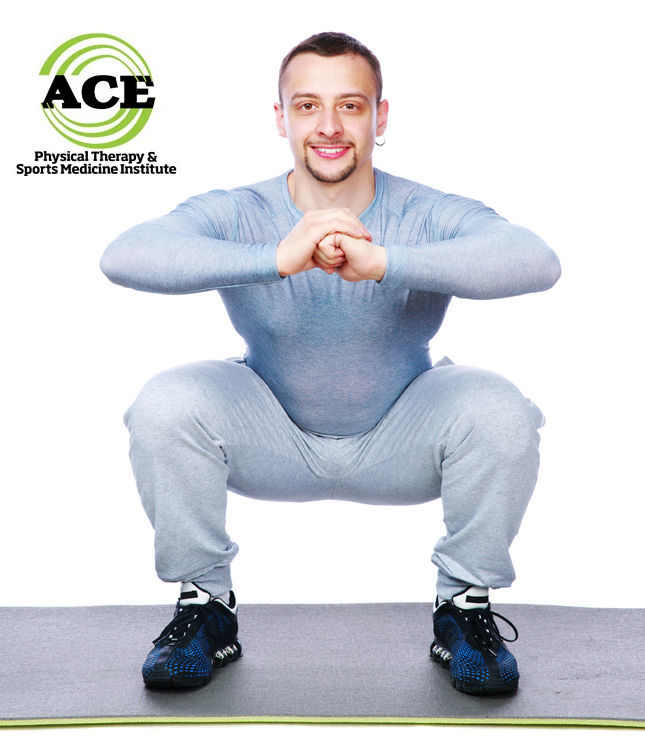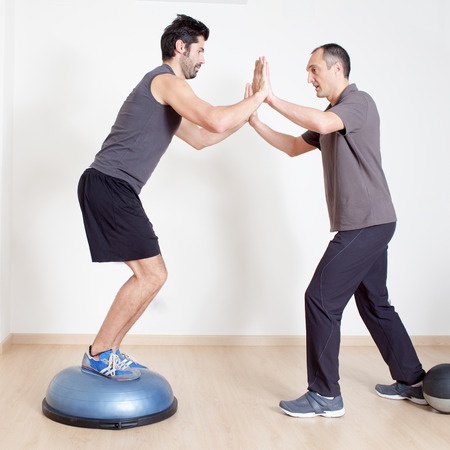Stable vs Unstable Exercise Surface Training

Tid Bits of Info
- Almost any exercise that is performed on stable surfaces can be performed on an unstable surface.
- Core control and strength have to be the foundation of all exercise routines.
- Cellulitis that is not treated can progress to a systemic infection, sepsis, that can be life-threatening.
- Tremor or uncontrollable limb movement while on an unstable surface is a good indication that the core and other musculature is weak or deconditioned.
- Simply performing standing exercises on a pillow will make the surface somewhat unstable.
- Seek the advice of a Physical Therapist for an exercise routine that will use a combination of stable and unstable surfaces.
Over the last few years, unstable exercise surface training has become a growing fitness trend. An unstable exercise surface increases the difficulty level of the overall routine. It is believed that this increased difficulty will yield a range of physical benefits such as increased strength and power. While there are benefits related to unstable exercise surfaces, research indicates that gross increases in strength and power are not one of them.
Traditional Strength Training
Historically, the key to building strength involves weight lifting and other forms of resistance to “over-load” the muscles of the body. As the muscles recover from over-loading, they increase in power and strength. It is believed that the greater amount of “over-load” should produce the greatest gains in strength and power.
This theory led many healthcare professionals, trainers, coaches and others to design strength developing workouts that utilized an unstable exercise surface. It was believed that the increased difficulty correlated with increases in strength and power. Unfortunately, this correlation does not seem to exist. Unstable surfaces make the exercises more difficult, but do not appear to increase the “over-load” sufficiently to increase the strength and power gains that are developed with traditional type exercises.
The Benefits of an Unstable Exercise Surface
Unstable surfaces do offer benefits in other areas such as rehabilitation and core conditioning. An injured or deconditioned body part can experience significant loss of the normal neuromuscular activity. Rehabilitation addresses this loss through exercises designed to re-educate and facilitate neuromuscular activity.
Certain exercises that utilize unstable surfaces develop or re-educate the reflexive response of nerves and muscles, establishing or re-establishing the normal proprioception, kinesthetic sense and neuromuscular response to a stimuli. A more simple way of explaining this concept is to say that these exercises develop or re-educate the nerves and muscles to “work” together to be able to control a particular body part.
More and more people are also learning the value of core conditioning. The core musculature is thought to be the “foundation” of all motions and movements. Exercises that are performed on unstable surfaces have been shown to increase the amount of core muscle involvement. There is a larger need for core stability and activity when the surface that someone is exercising on is unstable. If the core does not stabilize the spine and pelvis, the arms and legs cannot work efficiently and will not improve in their strength and power production.
Unstable surfaces offer a challenge to the person who performs exercises on them. The ability to develop better core control, strength and reflexive neuromuscular response in all involved joints is evident. It appears that the development of gross bulk, strength and power occurs best with traditional exercises. For most people the combination of the two forms of exercise would most likely be the most beneficial.


























Wow, superb blog layuot! How long have you been blogging for?you made blogging look easy. The overall look of your site is excellent, aswell as the content!